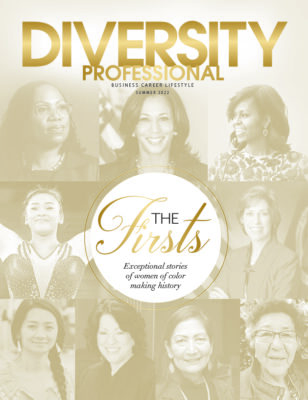FAIR ENOUGH? HOW TO BRING EQUITY TO THE WORKPLACE
Hiring criteria and compensation gaps play a role.
“EVEN COMPANIES THAT HAVE GONE THE EXTRA MILE TO CREATE A DIVERSE APPLICANT POOL NEED TO BE MINDFUL OF WHETHER SUCCESSFUL APPLICANTS CAN SUCCEED WITHIN THE COMPANY.
Do Americans always experience fair treatment in the workplace?
Maybe not—or at least they don’t think they do. One survey by Gartner, a technological research and consulting firm, found that just 18% of employees agree that their organizations treat everyone fairly.
But fairness isn’t necessarily what employees and employers should be looking for, says Dr. Nika White, president and CEO of Nika White Consulting and the Forbes Books author of “Inclusion Uncomplicated: A Transformative Guide to Simplify DEI.”
“While human beings should be considered equally valuable and worthy,” White says, “that does not mean they should all be treated exactly the same way.”
She says to grasp why this is so, it helps to understand the difference between two similar words—equality and equity. Equality is when everyone has access to the same thing. Equity is when everyone has access to what they need to be successful.
“That’s the thing that makes equity so tricky,” White says. “What people need to succeed can vary from person to person and from one organization to another.”
That lack of a simple, one-answer-works-for-everyone solution leaves some employers befuddled about how to address inequity, so they concentrate on trying to be fair instead. The result: Problems often go unsolved.
So, what should these organizations do? Among White’s suggestions for getting started in the right direction:
■ Review hiring criteria and policies. Hire the best person for the job, but bring equity into the process. “Sometimes the basic criteria you’re using may need to change,” she says. For example, excellent candidates can be locked out when too much emphasis is placed on achieving a certain education level, rather than including people who gained experience through other avenues.
■ Don’t make hiring the final goal. Once these candidates become employees, the work is not over. Training initiatives, career development opportunities, and accommodations also might need to be made. “Even companies that have gone the extra mile to create a diverse applicant pool need to be mindful of whether successful applicants can succeed within the company,” White says. “If somebody hired is the only one of their group—the only woman, the only differently abled—they could face challenges that can keep them from advancing.”
■ Shrink compensation gaps. It’s common in many organizations to find salary discrepancies, such as gender pay gaps, between privileged groups and others. One remedy is a change in policies, such as greater transparency, increased oversight, stricter criteria, or all of these. But don’t stop there. “Actions may be needed that are, again, unequal,” White says. She offers the example of tech giant Salesforce, which spent $3 million in 2015 to equalize compensation across the company. That effort revealed something that was perhaps surprising. “It turned out that roughly the same number of men and women were impacted, suggesting that some groups of men were also being undercompensated.”
“Diverse teams make organizations more effective and more profitable—research supports this,” White says. “But if we allow talented people to struggle or eventually leave all in the name of equality, we’re diminishing our organizational capacity in the process. By taking a more equitable approach—not by treating everyone the same—your organization can enjoy more favorable outcomes.”









